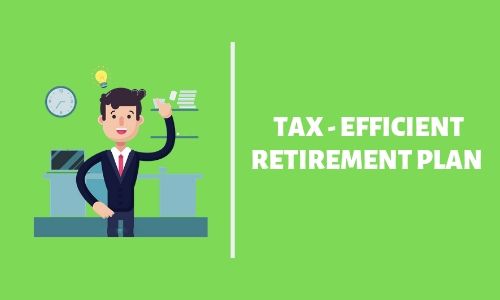Are you planning to take up new hobbies, relax at home, watch TV or participate in volunteer activities? Then you ought to have eight times your salary saved by the time you’re 60 and ten times your salary by the time you’re 67.
But what if you don’t have that amount and you’re nearing 60? Is your retirement hope lost? Of course not. Or maybe, you love your job and want to hold onto it for more years.
Whatever the reason for postponing your retirement, these top six retirement planning tips for your mid-60s and beyond can help you attain your financial goal.
So, let’s get started.
Pay Down Your Debt
Paying down any pending debt should be your priority. That includes credit card debt, payday loans, car and mortgage loans, and others.
The reason is simple – you shouldn’t be going into your non-earning years owing money.
You can use many strategies to address your debt – you can consolidate your payday loan or credit card debt, try debt settlement for big loans or sign up for a debt management program.
Fund Your Retirement Savings Vehicle to the Max
If you have a 401(k) or a similar plan, and you’re not already funding it to the max, you may be losing thousands of free dollars. But there’s still time to make up for it.
Each year, the maximum amount you can put into your plan is changed to keep up with inflation. For people under 50, it was $19,500 in 2021 and now it’s $20,500 in 2022.
But if you are 50 or older, you can put in an extra $6,500, which brings the total to $27,000.
So, now that you have come of age, you can use the increased contribution threshold and boost your savings.
If instead of 401(k) you have any other vehicles like traditional IRA and Roth IRA, the advice stands – max out those accounts if you can. There are also catch-up options available on these retirement accounts.
The power of compounding can grow your contributions into life-changing wealth.
Rearrange Your 401(k) Allocation
In your mid-60s, you may want to invest more conservatively, by putting more money into lower risk investments like bonds and less into higher risk investments like stocks
The reason is that, generally speaking, as people get older, many may not be able to afford to take financial risks. If the stock market goes down for a long time, older people cannot afford to wait for years for the prices to go up, and they may have to sell at a loss.
So, as you get older, you may want to switch to a more conservative portfolio with an asset allocation that may look something like this 70% to 75% bonds, 15% to 20% stocks, and 5% to 15% in cash or cash equivalents like a money-market fund.
If you don’t want to be too conservative in your investment, you can lower the bonds to 55% to 60% and increase the stocks to 35% to 40%.
Use Your Home for Income
If you live in a big place, you might want to consider switching to a smaller home that costs less in a place where the cost of living is lower.
However, if moving at this age is too stressful, but you need more money for your retirement, you can consider reverse mortgages.
With a reverse mortgage, the lender makes payment as a lump sum, fixed monthly payment, or line of credit to the homeowner. You can choose any of the payment processes according to your liking. You can also keep your homeownership.
Over the loan’s life, your debt will continue to increase, and your home equity will decrease.
If you move or die, the home sale proceeds will go to the lender to repay the reverse mortgage’s principal, interest, insurance, and fees.
Time and again, research has proven that the reverse mortgage can be a valuable tool for personal financial planning if you use it wisely, said Wade Pfau, Ph.D., Professor of Retirement Income at the American College of Financial Services.
So before you apply for a reverse mortgage, clear all your doubts about the plan. Ask questions such as how much you’ll pay in fees, what the mortgage terms are, and how you can get paid.
Take Charge of Your Spending – Use Zero Based Budgeting
Actively monitoring your finances using zero-based budgeting can help you stay up to date on account balances, cut down mindless spending, and boost savings.
The zero-based budgeting method is a monthly saving and spending plan in which you give every dollar of your income a specific purpose. You will make a monthly list of all your expenses and assign spending limits to each so that the difference between the sum of your expenditure and income comes down to zero.
For example, some of your money will be used to pay bills, some to save, and some to invest, and at the end of the month, you will use all of your earnings for specific purposes.
Micromanaging your finances in this way will help you take charge of your spending and focus on saving.
Wait Until Age 70 to Take Out Social Security
If you start taking Social Security benefits before you reach full retirement age, your annual benefits will be less than if you wait until you reach full retirement age.
So, if you don’t need the money right away, you might want to wait until you’re 70 to get the most benefit. Waiting any longer will not raise the value of your Social Security benefits.
Be Tax Savvy
Your retirement withdrawal strategy, including which accounts you access first, second, and so forth, will determine your tax liability and help make sure that your savings last longer.
In general, it’s preferable to withdraw from taxable savings before tax-advantaged retirement accounts, especially with the possibility of rising tax rates. But, in some circumstances, there may be tax benefits to utilizing multiple retirement savings accounts simultaneously.
To know what will work best for you, you can take the help of a tax accountant.
Bottom Line
See the above tips as a guideline and not a one-size-fits-all solution. Given your financial situation, some tips might work for you, while others might not. So, it’s essential to choose the avenues that will give you the best benefit.
If you don’t know how to make the right choice, it’s best to work with a financial planner or retirement counselor.
Author’s Bio: This guest post was written by Lyle Solomon. Lyle has considerable litigation experience as well as substantial hands-on knowledge and expertise in legal analysis and writing. Since 2003, he has been a member of the State Bar of California. In 1998, he graduated from the University of the Pacific’s McGeorge School of Law in Sacramento, California, and now serves as a principal attorney for the Oak View Law Group in California. He has contributed to publications such as Entrepreneur, All Business, US Chamber, Finance Magnates, Next Avenue, and many more.

The opinions expressed here are those of the author and do not necessarily reflect the views or opinions of Advisory Alpha, LLC.
The information presented is hypothetical and for illustrative purposes only and should not be used as the primary basis for an investment decision. Please consult a financial advisor to discuss your individual situation prior to making any investment decision.
This article is not endorsed or approved by the Social Security Office or any other Government Agency.
While tax and legal issues may be discussed in the general course of financial and investment planning, Advisory Alpha does not provide tax or legal services. Please consult with your tax or legal professional prior to making decisions relative to these issues.
Investing in the bond market is subject to risks, including market, interest rate, issuer credit, inflation risk, and liquidity risk. The value of most bonds and bond strategies is impacted by changes in interest rates. Bonds and bond strategies with longer durations tend to be more sensitive and volatile than those with shorter durations; bond prices generally fall as interest rates rise. Bond investments may be worth more or less than the original cost when redeemed. Income from municipal bonds may be subject to the Alternative Minimum Tax (AMT), and capital appreciation from discounted bonds may be subject to state or local taxes. Capital gains are not exempt from federal income tax.
Investors should carefully consider investment objectives, risks, fees, and expenses before investing. Investing in securities involves varying degrees of risk, including loss of principal and lack of liquidity. For more important information, please read the disclosure documents provided by your investment advisor representative before investing. This does not constitute an offer to sell nor a solicitation of an offer to buy. Past performance does not guarantee future results.




